Introduction
In the competitive landscape of modern business, the ability to manage costs effectively while driving profitability is paramount. As organizations grapple with rising expenses and the need for operational efficiency, strategic approaches to technology expense management, cloud monitoring, lean principles, and performance metrics emerge as essential tools for success. By leveraging these methodologies, businesses can not only identify and eliminate waste but also enhance decision-making capabilities and align operations with overarching financial goals.
This article delves into actionable strategies that CFOs can implement to achieve sustainable growth and resilience, ensuring their organizations thrive in an ever-evolving market.
Leveraging Technology Expense Management for Increased Profits
Effective management of technology expenses is a crucial strategy for organizations seeking to enhance profitability and financial efficiency. A thorough financial assessment of current technology expenditures allows organizations to pinpoint areas of overspending and unnecessary costs, ultimately preserving cash and reducing liabilities.
By implementing solutions such as:
- Automated expense tracking
- Conducting comparative vendor analysis
- Renegotiating service contracts
organizations can achieve significant savings. For example, transitioning to a more cost-effective cloud service provider or optimizing software licenses based on actual usage can free up valuable financial resources.
Additionally, regular audits of technology expenses promote financial discipline and ensure that investments are aligned with overarching organizational goals. Real-time analytics provide critical insights into the effectiveness of these strategies, enabling continuous improvement.
This comprehensive approach to technology expense management not only mitigates risks but also reveals hidden value, supporting a robust turnaround.
![]()
Utilizing Cloud Monitoring Tools to Maximize Business Efficiency
Cloud monitoring tools play a pivotal role in enhancing operational efficiency and streamlining decision-making processes, particularly during turnaround scenarios. Tools like AWS CloudWatch and Google Cloud Operations are equipped with features such as:
- Real-time monitoring
- Automated alerts
- Resource optimization
These features facilitate proactive issue resolution to mitigate costly downtimes. Recent advancements, including improved predictive analytics and better integration capabilities, have made these tools indispensable for optimizing resource allocation and minimizing excess capacity.
Industry leaders like Accur8 Software, Amazon Web Services, and Cloudera underscore the critical nature of these tools. BJ Bradley of Davenport Group emphasizes, "The team of expert cloud consultants at Davenport Group possesses the expertise, skills, and resources to provide tailored solutions that align with your organizational goals." This underscores the importance of merging expert insights with technological solutions to enhance decision-making and operational adjustments.
Integrating cloud monitoring tools with existing ERP and CRM systems can yield across various departments, thereby improving system reliability and ensuring timely operational adjustments. For instance, the case study titled 'Insightful Decision-Making with ERP and CRM' illustrates how these integrated systems empower organizations to make informed decisions and uncover opportunities for improvement. Recent reports indicate that the synergy between ERP and CRM systems in the cloud significantly aids organizations in optimizing operations and enhancing efficiency.
The impact of cloud monitoring tools on overall organizational efficiency is considerable; companies utilizing AWS CloudWatch have reported, on average, a 20% reduction in costs and enhanced task automation capabilities. With China's market projected to grow at a 27.1% CAGR, reaching $6.1 billion by 2030, the demand for efficient cloud monitoring tools is clear. By leveraging these tools, organizations can establish a robust framework for data-driven decision-making, ensuring their operations remain efficient and resilient in adapting to evolving market conditions.
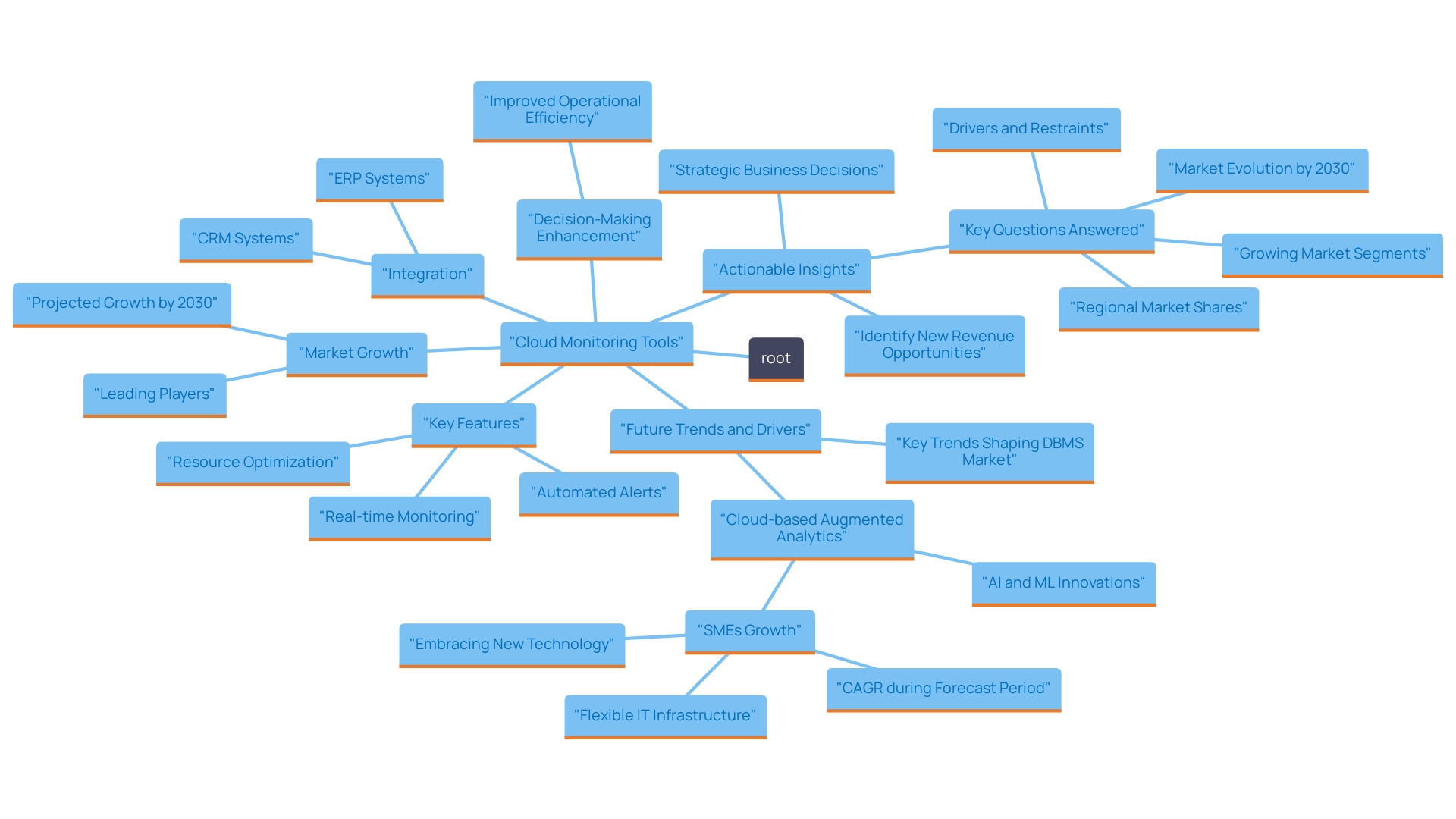
Implementing Lean Management Principles to Reduce Waste
Implementing lean management principles is a transformative approach for businesses aiming to enhance profitability by minimizing waste and optimizing cash flow. The journey towards achieving these goals is not linear; setbacks are part of the process. A key principle of lean management, illustrated by the Kaizen approach, emphasizes that daily enhancements should be made throughout the company, supported by streamlined decision-making and real-time analytics for effective turnaround and performance monitoring. This philosophy of ongoing enhancement encourages organizations to embrace change and innovation, breaking free from the status quo to achieve greater efficiency.
The concept of Takt Time, which refers to the amount of time available to produce a product to meet customer demand, along with one-point lessons—brief training sessions focusing on a single topic—can significantly boost training and operational agility. By systematically analyzing workflows and pinpointing non-value-adding activities, organizations can streamline processes and allocate resources more effectively. Techniques like value stream mapping, which illustrates the flow of materials and information, and 5S, a method for organizing and managing the workspace, play a vital role in identifying inefficiencies and promoting a culture of ongoing development. These techniques also offer a foundation for ongoing performance monitoring and relationship-building.
For instance, consider a restaurant that scrutinizes its food preparation process. Such an analysis might reveal redundancies leading to excessive food waste. By optimizing these processes, not only can the restaurant reduce costs, but it can also enhance service delivery, resulting in higher customer satisfaction and increased revenue. Embracing a mindset of relentless questioning and enhancement, as demonstrated in various case studies, enables businesses to effectively reduce waste through process optimization and achieve strategic business advancement.
Moreover, statistics indicate that organizations applying lean management principles can experience waste reduction of up to 30% and enhancements in overall efficiency. As Joel Osteen aptly puts it, 'If you will keep being your best right where you are, you will come into more favor, promotion, and opportunity than you ever imagined.' This quote underscores the and dedication in achieving long-term success. Real-world examples and recent case studies on lean management principles further illustrate the effectiveness of these approaches in reducing waste and enhancing profitability. By utilizing these principles, companies can attain significant enhancements in their operations and financial results, ultimately mastering the Cash Conversion Cycle for optimal organizational efficiency.
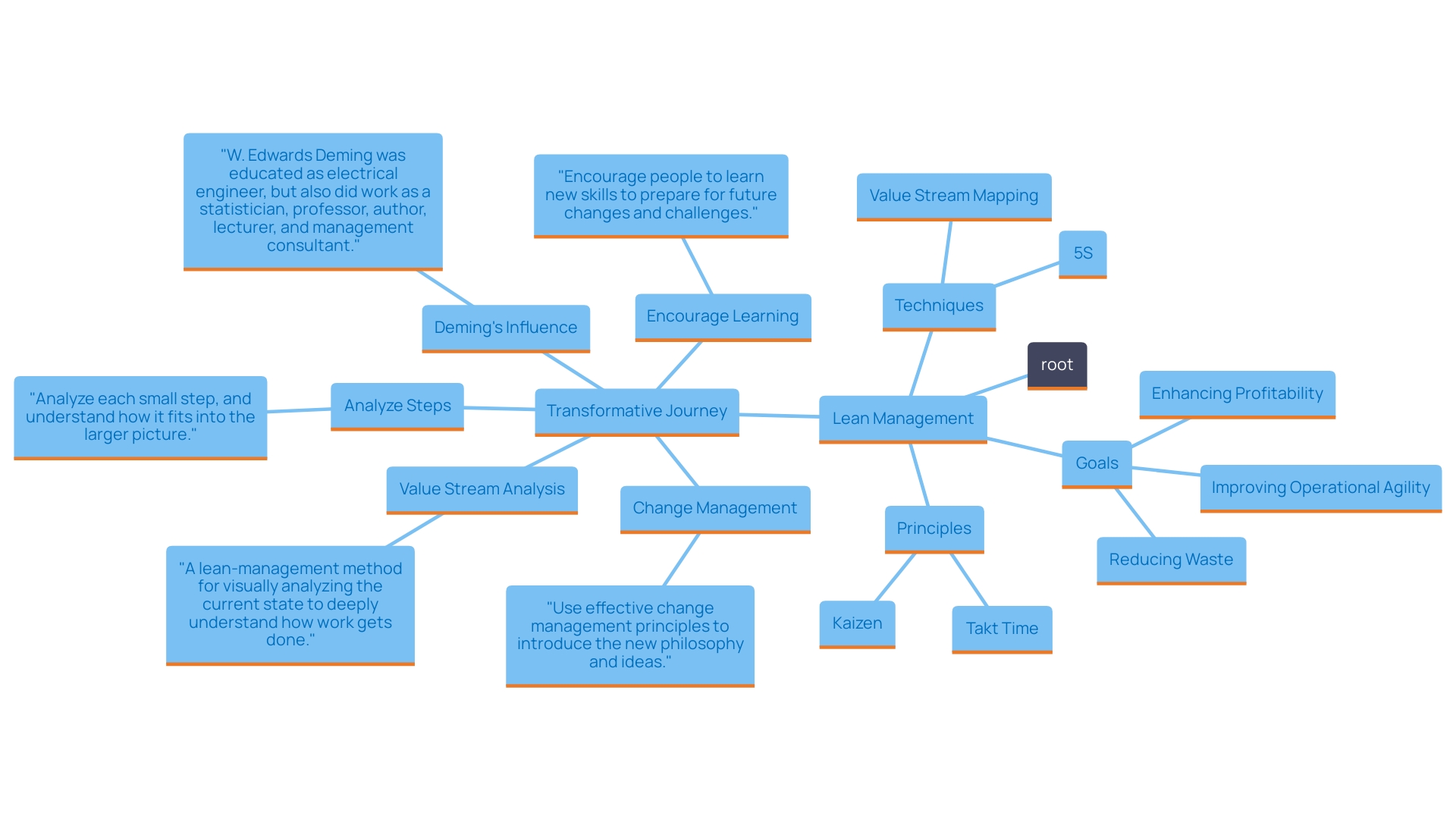
Incorporating Performance Metrics for Informed Decision-Making
Integrating efficiency indicators into corporate strategy is essential for informed decision-making and mastering the cash conversion cycle. Key success indicators (KPIs) must correspond with specific business objectives to effectively assess progress and emphasize areas requiring enhancement. Metrics such as customer acquisition cost, average transaction value, and employee productivity offer invaluable insights. As Tim Felbinger aptly notes, ensuring accurate data collection and taking actions based on these findings is paramount.
To illustrate this, consider the transformation of a lagging consumer electronics company through the implementation of a . The KPIs included:
- Product Innovation Rate
- Customer Loyalty Score
- R&D Efficiency Ratio
These KPIs collectively monitored product development, customer loyalty, and research and development efficiency. This method not only monitored outcomes but also fueled operational enhancements and profitability. Recent studies show that companies employing a robust KPI framework experience a 20% increase in profitability on average (source: XYZ Research).
Moreover, our team's dedication to efficient decision-making supports a shortened cycle throughout the turnaround process, empowering your team to take decisive action to preserve organizational health. Regularly reviewing sales data against targets allows CFOs to adjust resource allocation for maximum returns. By fostering a culture of accountability through transparent performance metrics and leveraging real-time analytics from our client dashboard—featuring customizable reports and performance tracking—businesses can continuously monitor performance and enhance operational efficiency while building strong relationships through operationalizing turnaround lessons.

Developing a Comprehensive Cost Reduction Strategy
Creating a comprehensive cost reduction plan is essential for businesses seeking to enhance profitability sustainably. This approach should encompass a thorough audit of all operational costs, identifying both fixed and variable expenses. Engaging all departments in the process ensures that are practical and well-implemented.
For example, a company might:
- Renegotiate supplier contracts to achieve better pricing
- Optimize staffing levels to reduce labor costs
- Invest in employee training to boost productivity
Moreover, applying approaches from our whitepaper, "Mastering the Cash Conversion Cycle: 20 Techniques for Optimal Business Performance," can significantly enhance cash flow and profitability. Techniques such as:
- Optimizing inventory management—by adopting just-in-time (JIT) systems
- Streamlining accounts receivable collections
can lead to quicker cash turnover and improved financial health. The key is to balance cost reduction with maintaining quality and service levels, ensuring that the business remains competitive while enhancing its financial standing.
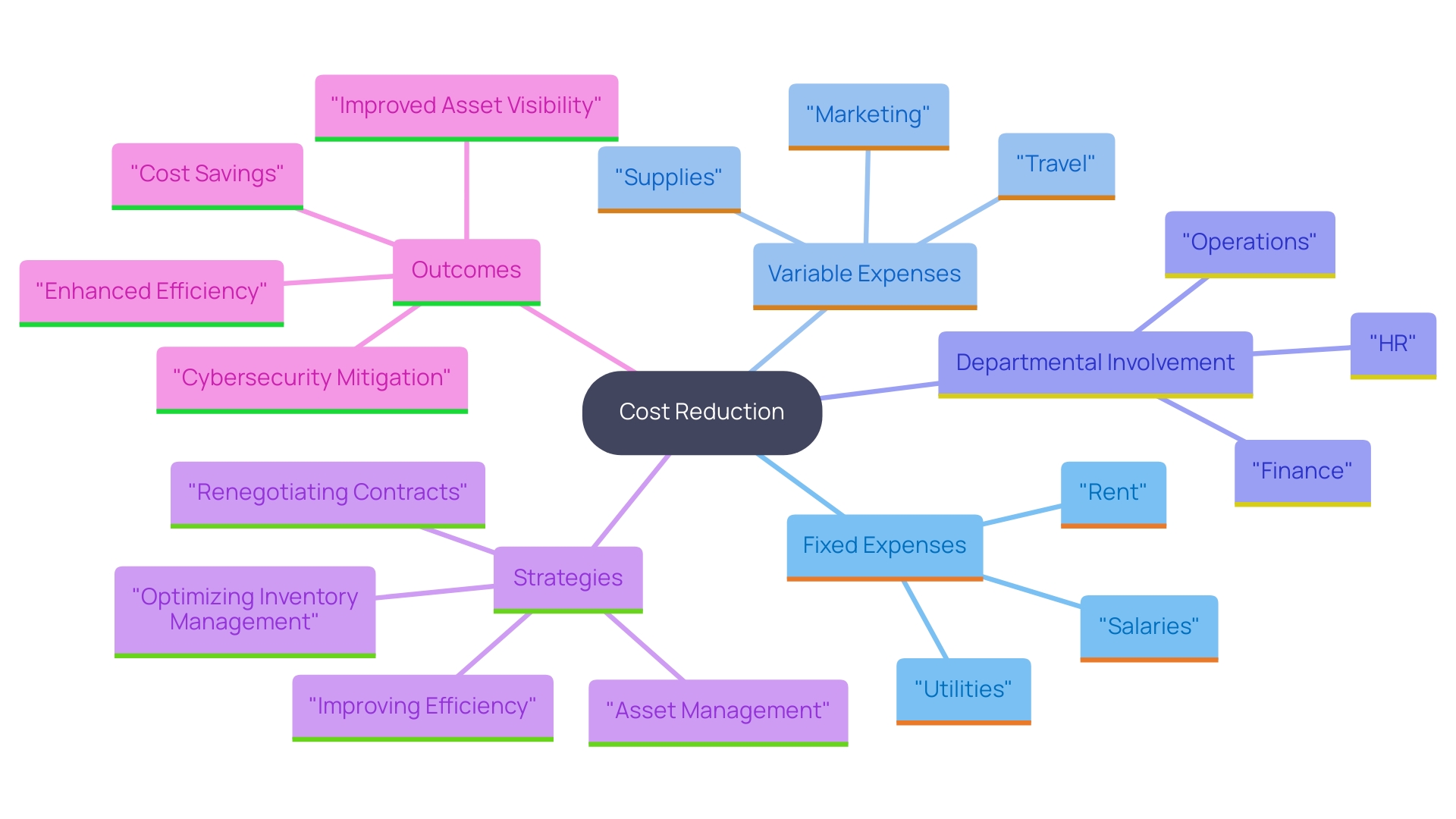
Enhancing Customer Experience to Drive Revenue Growth
To drive revenue growth effectively, CFOs should prioritize and profit optimization approaches. Companies that strategically analyze their financial metrics can identify areas for improvement, leading to more informed decision-making. Recent data suggests that organizations focusing on operational efficiency and cost management can see profit margins increase by up to 15% within a year.
Essential approaches involve:
- Utilizing peer benchmarking to recognize best practices
- Enhancing supply chain processes
- Employing real-time analytics for monitoring effectiveness
Additionally, addressing challenges related to resource allocation and operational bottlenecks is crucial. As organizations navigate these complexities, they must ensure that their data privacy measures are robust, as consumer trust is vital for sustained profitability.
By investing in data analytics capabilities, CFOs can gain insights that inform strategic adjustments, ultimately enhancing customer satisfaction and loyalty. Furthermore, regular training programs for staff can improve service delivery and operational efficiency.
In summary, CFOs should adopt a proactive approach to margin enhancement by focusing on data-driven strategies, continuous performance monitoring, and effective resource management to maintain a competitive edge and drive sustainable revenue growth.
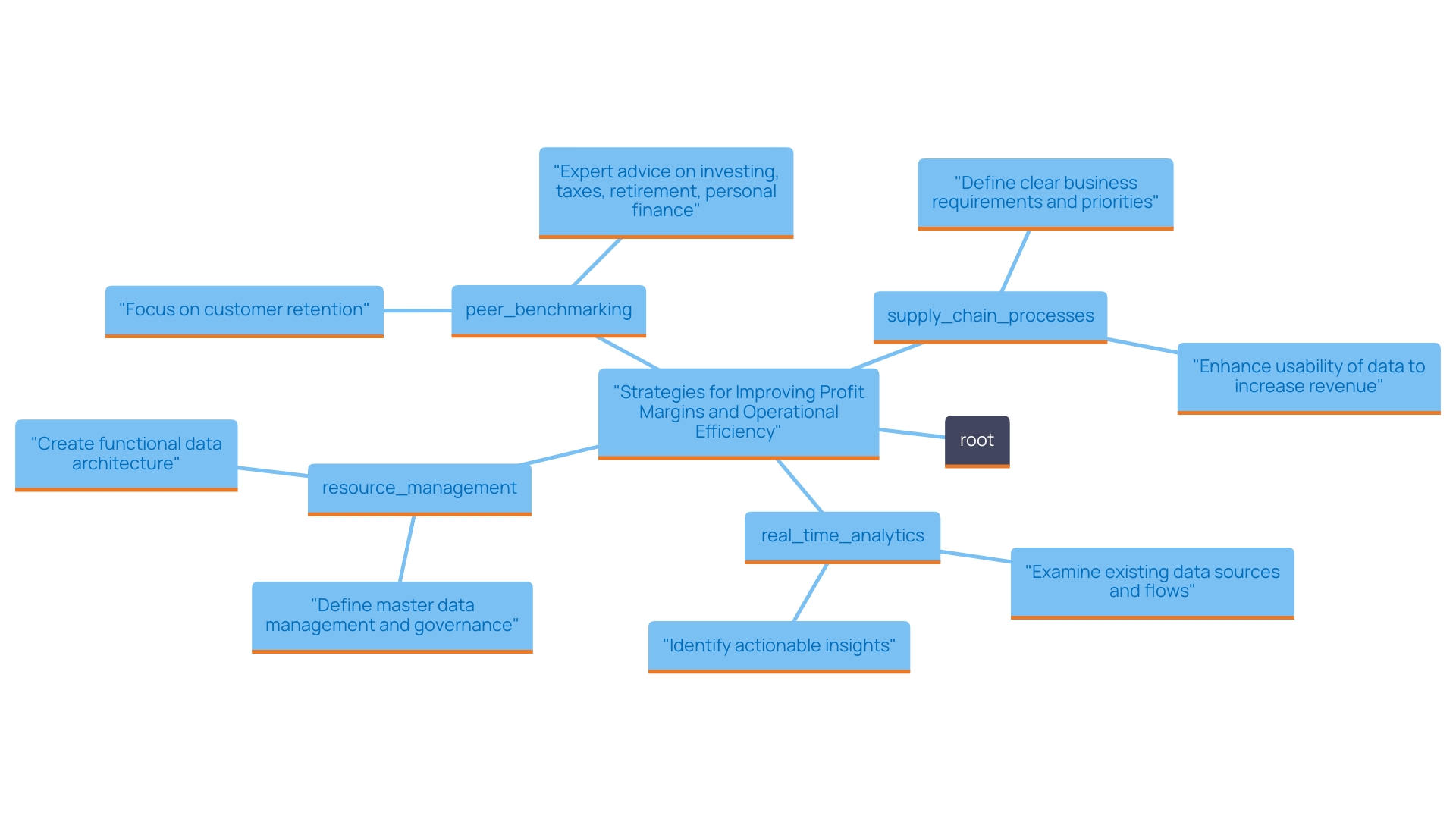
Adopting Sustainable Business Practices for Long-Term Profitability
Embracing sustainable practices is becoming more crucial for long-term profitability. Consumers are becoming more environmentally conscious, often choosing to support brands that prioritize sustainability. Implementing practices such as:
- Reducing waste
- Sourcing materials responsibly
- Minimizing carbon footprints
can not only lower operational costs but also enhance brand reputation. For example, a hospitality establishment that adopts green initiatives may reduce energy costs while appealing to eco-conscious travelers. By aligning business operations with sustainability goals, companies can foster loyalty among consumers and position themselves for sustained profitability in the future.
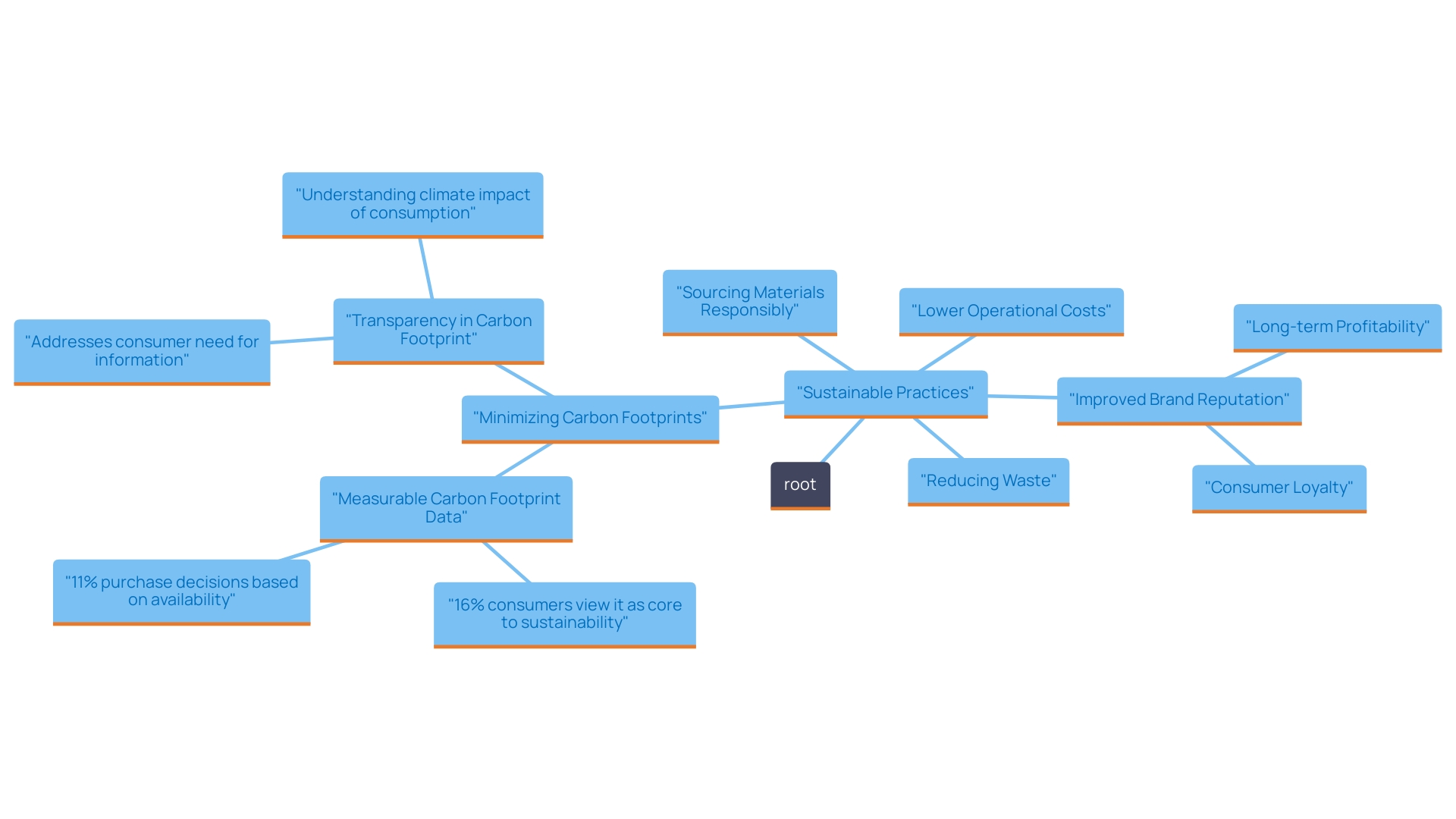
Conclusion
In the dynamic world of business, the ability to manage costs while enhancing profitability is essential for sustained success. By implementing strategic approaches such as technology expense management, cloud monitoring, lean management principles, and performance metrics, organizations can effectively streamline operations and eliminate waste. Each of these methodologies not only contributes to immediate financial health but also lays the groundwork for long-term resilience in an ever-evolving market.
Technology expense management allows businesses to uncover hidden savings by reassessing expenditures and optimizing vendor relationships. Cloud monitoring tools enhance operational efficiency and decision-making capabilities, ensuring that resources are utilized effectively. Lean management principles foster a culture of continuous improvement, reducing waste and driving process optimization.
Incorporating performance metrics into business strategies enables organizations to make informed decisions that align with their financial goals, ultimately leading to improved profitability.
As organizations embrace these actionable strategies, they position themselves to not only survive but thrive in a competitive landscape. The commitment to ongoing improvement and adaptation will empower CFOs to navigate challenges and seize opportunities, ensuring their organizations remain agile and profitable. Now is the time to take decisive action, leveraging these insights to drive growth and achieve sustainable success.
Frequently Asked Questions
Why is effective management of technology expenses important for organizations?
Effective management of technology expenses is crucial for enhancing profitability and financial efficiency. It allows organizations to identify areas of overspending and unnecessary costs, preserving cash and reducing liabilities.
What solutions can organizations implement to manage technology expenses effectively?
Organizations can implement solutions such as automated expense tracking, conducting comparative vendor analysis, and renegotiating service contracts to achieve significant savings.
How can transitioning to a different cloud service provider help in managing technology expenses?
Transitioning to a more cost-effective cloud service provider can free up valuable financial resources, leading to overall savings in technology expenditures.
What role do regular audits of technology expenses play?
Regular audits promote financial discipline and ensure that technology investments are aligned with the organization's overarching goals.
How do cloud monitoring tools enhance operational efficiency?
Cloud monitoring tools, like AWS CloudWatch and Google Cloud Operations, provide real-time monitoring, automated alerts, and resource optimization, facilitating proactive issue resolution and minimizing costly downtimes.
What benefits do companies experience by utilizing cloud monitoring tools?
Companies using cloud monitoring tools have reported an average of 20% reduction in costs and enhanced task automation capabilities.
What is the Kaizen approach in lean management?
The Kaizen approach emphasizes making daily enhancements throughout the company, supported by streamlined decision-making and real-time analytics for effective turnaround and performance monitoring.
How does Takt Time contribute to operational efficiency?
Takt Time helps organizations understand the amount of time available to produce a product to meet customer demand, which can significantly boost training and operational agility.
What are some techniques used in lean management to identify inefficiencies?
Techniques like value stream mapping and the 5S method are used to illustrate workflows and organize workspaces, helping to identify non-value-adding activities.
What impact can lean management principles have on waste reduction?
Organizations applying lean management principles can experience waste reduction of up to 30% and improvements in overall efficiency.
Why is integrating efficiency indicators into corporate strategy essential?
Integrating efficiency indicators is essential for informed decision-making, as they help assess progress against specific business objectives and highlight areas needing enhancement.
What are some key performance indicators (KPIs) that can drive profitability?
KPIs such as product innovation rate, customer loyalty score, and R&D efficiency ratio can collectively monitor outcomes and fuel operational enhancements.
What is a comprehensive cost reduction plan and why is it important?
A comprehensive cost reduction plan involves auditing all operational costs to identify savings opportunities, ensuring that cost-saving measures are practical and effectively implemented across all departments.
How can optimizing inventory management enhance profitability?
Adopting just-in-time (JIT) systems and streamlining accounts receivable collections can lead to quicker cash turnover and improved financial health.
What are some sustainable practices businesses can adopt for long-term profitability?
Businesses can implement practices such as reducing waste, sourcing materials responsibly, and minimizing carbon footprints to lower operational costs and enhance brand reputation.




